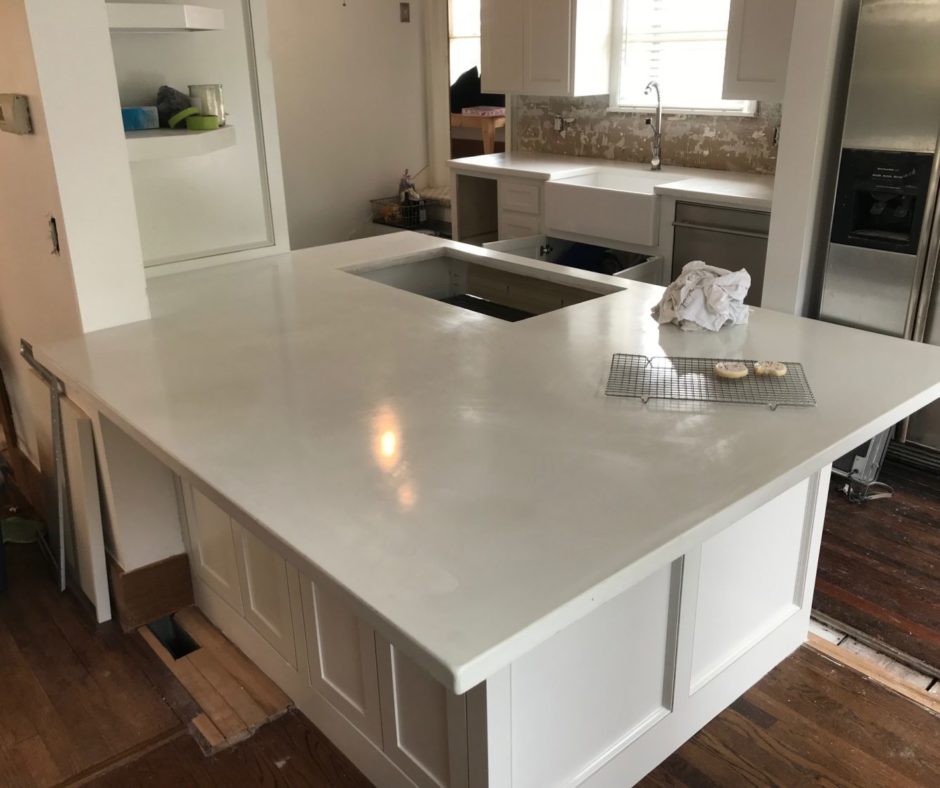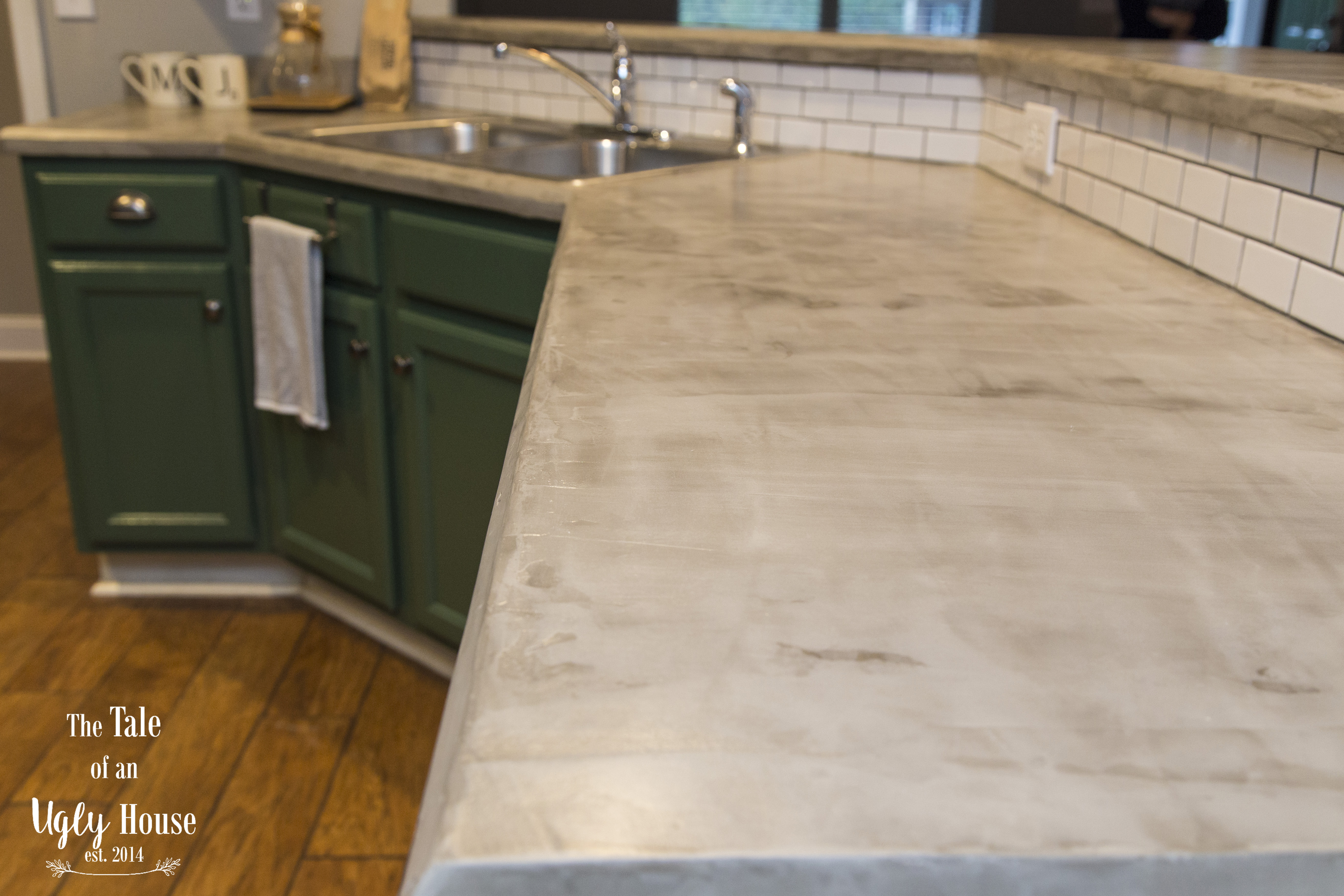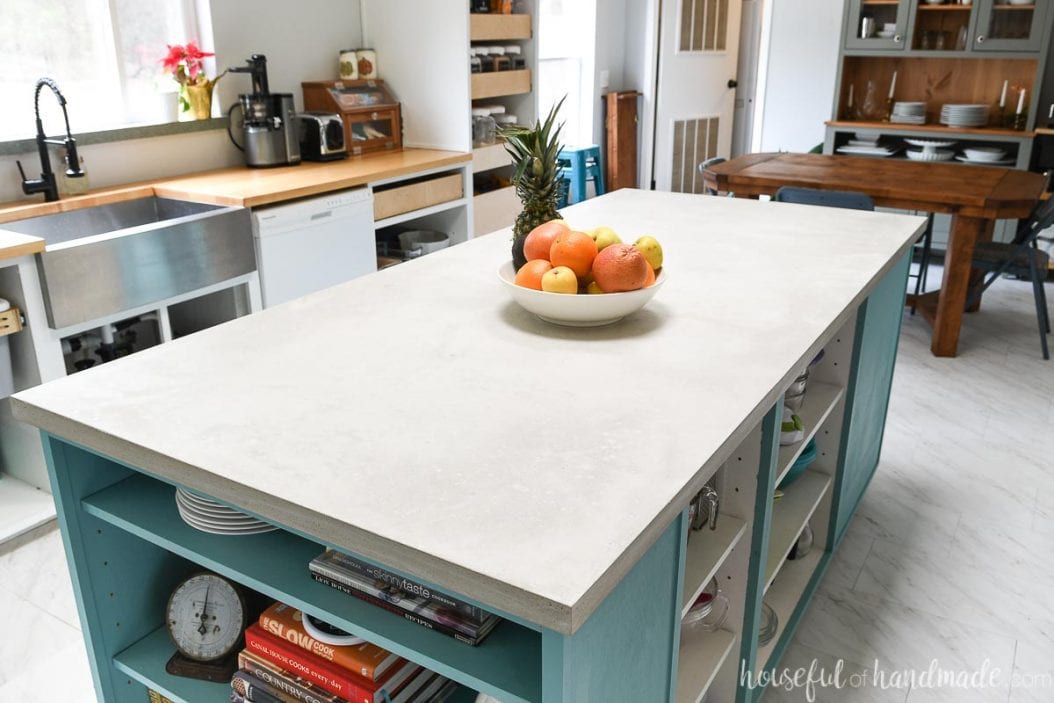Light-colored concrete countertops have become a popular choice for modern kitchen and bathroom designs due to their versatility, aesthetic appeal, and durability. Unlike traditional concrete, which tends to be dark gray, light-colored concrete countertops offer a range of hues, from soft whites to light grays and even subtle pastels. These countertops blend well with many design styles, from industrial and minimalist to farmhouse and Scandinavian. Light-colored concrete creates a clean, airy feel, making a space look larger and more open. Achieving the desired shade involves using pigments, aggregates, and additives that not only lighten the concrete but also enhance its durability and finish.
One of the main advantages of light-colored concrete countertops is their customizability. Each countertop is crafted from scratch, allowing homeowners to choose specific colors, shapes, textures, and even embedded materials such as stones or glass. This customization makes each piece unique, unlike prefabricated stone or laminate countertops. Additionally, concrete can be molded to fit any space, including unusual shapes and sizes. It can also be finished in various ways to create matte, polished, or textured surfaces, offering a truly one-of-a-kind look that can’t be replicated by other materials.
Creating light-colored concrete involves a special blend of materials to maintain durability and aesthetic appeal. White Portland cement is often used instead of regular gray cement to produce a lighter base color. Pigments and additives may also be added to achieve specific shades and improve the concrete’s resistance to cracking and staining. Fine sand and carefully selected aggregates give the concrete its smooth texture and consistent color. Some manufacturers even use reflective aggregates or fibers to create a luminous finish that adds depth and dimension to the countertop. These materials not only help achieve the desired color but also enhance the strength and longevity of the countertop.
To maintain a consistent color, light-colored concrete countertops must be cured and sealed properly. Concrete naturally has small pores, which means it can absorb liquids and become stained if not protected. This is especially important for light-colored surfaces, as stains and scratches are more noticeable on them. The curing process takes about 28 days, during which the concrete reaches its full strength. After curing, the countertop is sealed to prevent moisture absorption, staining, and etching. A good-quality sealer can also give the surface a sheen, which adds to the aesthetic appeal and makes the countertop easier to clean.

Sealing is a critical step for concrete countertops, particularly for light-colored varieties that are more prone to showing stains and discoloration. Different types of sealers can be used depending on the desired finish and functionality. Penetrating sealers soak into the concrete, offering protection from within without altering the countertop’s appearance. Film-forming sealers create a protective layer on the surface, providing additional protection and enhancing the countertop’s color. Polyurethane and acrylic sealers are popular choices, as they offer a balance between durability and aesthetic appeal. However, it’s important to ensure the sealer is food-safe if the countertop will be used for food preparation.
Maintenance is a significant consideration for light-colored concrete countertops, as their light hue can make scratches, stains, and wear more visible. Regular cleaning with mild soap and water helps keep the surface free from grime, but avoid harsh chemicals and abrasive scrubbers, as they can damage the sealer and create dull spots. Resealing is typically required every one to three years, depending on the level of use and the type of sealer applied. Regularly inspecting the countertop for any signs of wear can help determine the need for resealing, as small cracks, fading, or water not beading on the surface are indicators that resealing may be needed.
Another benefit of concrete countertops is their heat resistance. Although concrete itself can withstand high temperatures, the sealer used on light-colored countertops may not be as heat-resistant, making it essential to use trivets for hot pots and pans. Prolonged exposure to heat can damage the sealer, leading to discoloration and increased susceptibility to staining. In addition, placing hot items directly on the surface can cause thermal shock, potentially leading to cracks. Taking these precautions will help ensure the longevity and appearance of the countertop over time.

Light-colored concrete countertops are also known for their environmental friendliness. Concrete is made from abundant natural materials, and many manufacturers use recycled aggregates or fly ash, a byproduct of coal-burning power plants, to reduce environmental impact. This makes concrete a sustainable choice, especially when compared to other countertop materials that may require more extensive mining or processing. Additionally, concrete’s long lifespan reduces the need for frequent replacements, which also contributes to its environmental benefits. Homeowners looking for eco-friendly options often choose light-colored concrete to create an environmentally conscious and aesthetically pleasing space.
Another factor to consider when choosing light-colored concrete countertops is their ability to hide minor imperfections. Light concrete colors can make small scratches and stains more noticeable than darker colors, which is why a proper sealing and maintenance routine is essential. However, some homeowners embrace the natural aging process of concrete, as it develops a unique patina over time. This patina can add character to the countertop, making each surface unique. In some cases, homeowners even prefer an unsealed countertop to allow it to age naturally, though this requires more frequent cleaning and acceptance of a more rustic look.
The installation process for concrete countertops requires precision and expertise, as concrete is a heavy and unforgiving material to work with. Many countertops are poured on-site to ensure a perfect fit, although prefabricated options are also available. Pouring on-site allows for greater customization in terms of shape and size, which is ideal for kitchens with unique layouts or large islands. However, it also requires adequate curing time before the countertop can be used. Installers must be careful to avoid air bubbles, which can create weak points in the concrete, and ensure that the countertop is evenly supported to prevent cracking.

For homeowners interested in DIY, concrete countertops can be a rewarding project, though light-colored concrete requires additional attention to detail. Using a high-quality concrete mix, pigments, and additives will help achieve a professional finish. DIY enthusiasts should be prepared for a learning curve, as achieving a smooth, consistent finish can be challenging without experience. Working with concrete also requires patience, as it must be poured, cured, and sealed properly. For those who want the look of light-colored concrete but don’t feel comfortable with a full DIY project, there are kits and premixed products available that simplify the process.
Durability is a significant advantage of concrete countertops, though light-colored options require extra care to maintain their appearance. Concrete is highly resistant to scratches, stains, and heat when properly sealed, making it an excellent choice for high-traffic kitchens. However, due to its weight, concrete requires adequate support, especially for large countertops. Cabinets and supports must be reinforced to hold the weight of the concrete. Homeowners should also keep in mind that while concrete is durable, it is not indestructible; dropping heavy objects or applying excessive force can lead to chips or cracks.
Light-colored concrete countertops have a timeless appeal that complements a range of design styles. Their neutral tones make them versatile enough to blend seamlessly with wood, metal, and glass, as well as various paint colors and cabinetry styles. They can be paired with rustic materials for a farmhouse look or combined with stainless steel for a modern, industrial vibe. The subtle, understated look of light-colored concrete allows it to serve as a backdrop to other design elements, making it a popular choice among homeowners and designers alike.

Common Mistakes to Avoid
Using the Wrong Sealer: Some sealers are not food-safe or are insufficient for light-colored concrete countertops, which can lead to staining or discoloration. Always choose a sealer suitable for the intended use of the countertop.
Skipping Regular Resealing: Failing to reseal the countertop periodically can leave the surface vulnerable to stains and moisture damage, which is particularly noticeable on light-colored concrete.
Using Harsh Cleaners: Cleaning with acidic or abrasive products can damage the sealer and cause dull spots. Stick to mild soap and water to keep the countertop in top condition.
Placing Hot Items Directly on the Countertop: Although concrete is heat-resistant, the sealer is not. Use trivets to protect the surface from heat damage and avoid thermal shock that can lead to cracks.
Neglecting Routine Maintenance: Light-colored concrete can show wear and discoloration if not maintained properly. Regular cleaning, checking for scratches, and timely resealing are essential for preserving the countertop’s appearance.
Improper Installation: Inadequate support or failure to pour the concrete correctly can lead to cracking. Hiring a professional is recommended if you are unfamiliar with concrete installation.

How often should I reseal my light-colored concrete countertop?
Resealing every one to three years is generally recommended, depending on the sealer type and how heavily the countertop is used. For high-traffic areas, more frequent resealing may be necessary.
Can I use my light-colored concrete countertop as a cutting surface?
It’s best to avoid direct cutting on concrete countertops to preserve the sealer and prevent scratches, which are more visible on light-colored surfaces. A separate cutting board is recommended.
What is the best cleaner for light-colored concrete countertops?
Mild dish soap and water are usually enough for routine cleaning. Avoid acidic or abrasive cleaners, as they can damage the sealer. Gentle, pH-neutral cleaners work best to keep the surface looking fresh.
Are light-colored concrete countertops more prone to staining?
Yes, light-colored concrete is more susceptible to noticeable stains if not properly sealed and maintained. Using a high-quality sealer and promptly cleaning spills helps to protect the countertop.
Is light-colored concrete suitable for outdoor countertops?
Light-colored concrete can be used outdoors, but it’s essential to use a UV-resistant sealer to prevent discoloration from sunlight. Outdoor countertops may need more frequent resealing to withstand weather conditions.
How durable are light-colored concrete countertops?
With proper sealing and maintenance, light-colored concrete countertops are durable and can last many years. However, they are susceptible to heat damage, scratches, and staining if not cared for correctly.

Fast DIY Concrete Countertops in a Day – Houseful of Handmade

Light colored concrete counters with integrated concrete apron

Related articles:
- How To Stain Concrete Countertops
- DIY Concrete Countertop Mix
- Concrete Countertops Made Easy
- Concrete Countertop Overlay
- Black Concrete Countertops
- Marble Look Concrete Countertops
- Light Grey Concrete Countertops
- Concrete Countertop Design Ideas
- Light Colored Concrete Countertops
- Epoxy On Concrete Countertop